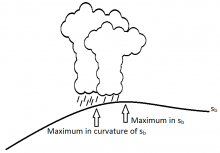Looped In: A Metric for Predicting the Strength and Location of the Tropical Rain Belt
Scientists demonstrated a direct link between tropical rainfall intensity and spatial distribution of surface moist entropy.

Determining the Intertropical Convergence Zone’s location and intensity is crucial for climate prediction because of their importance in the global hydrological cycle.
Photo by Andrew Coelho on Unsplash
Published: May 7, 2019
Harrop BE, J Lu, and LR Leung. 2019. “Sub-cloud moist entropy curvature as a predictor for changes in the seasonal cycle of tropical precipitation.” Climate Dynamics, online first, https://doi.org/10.1007/s00382-019-04715-2.
